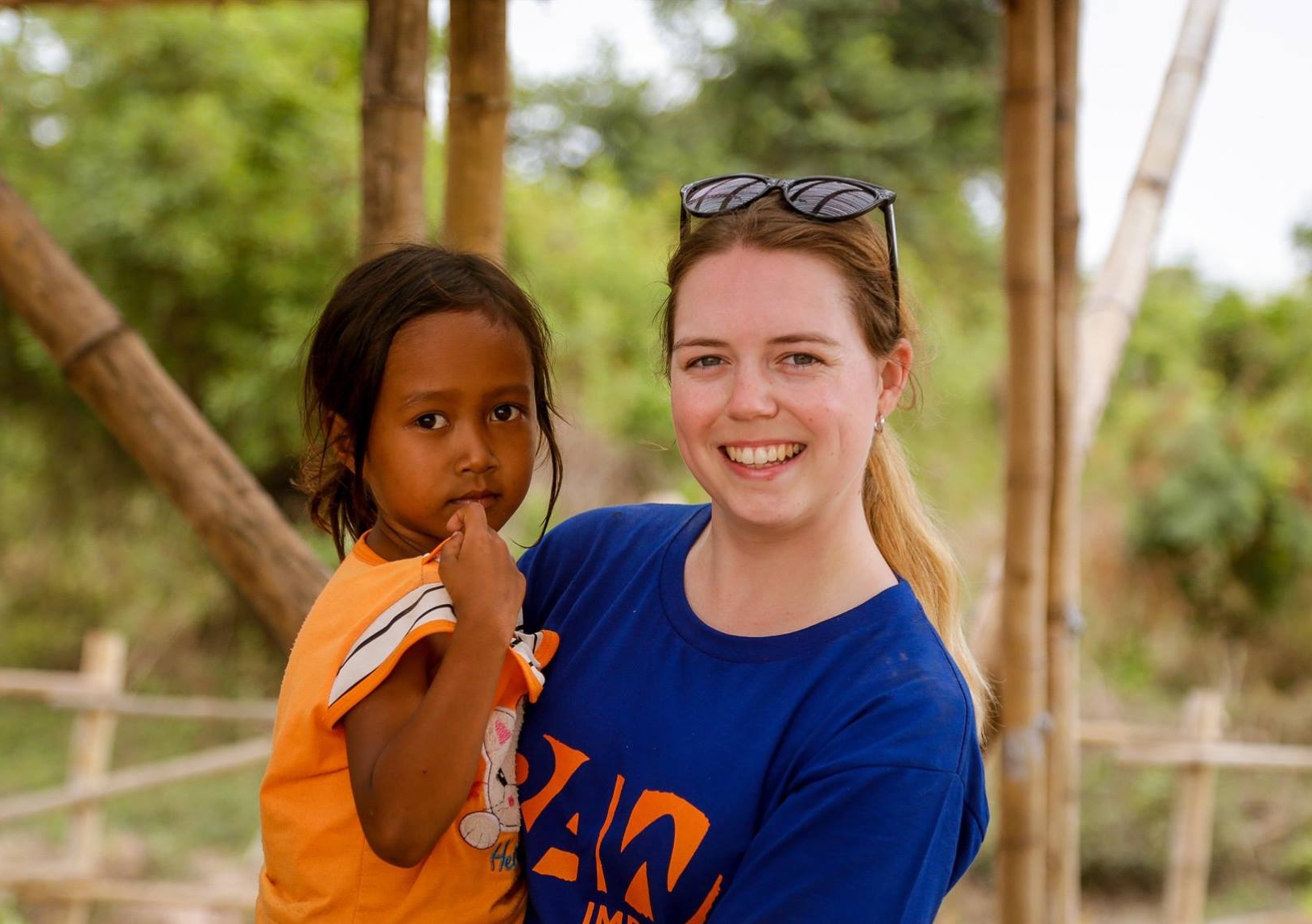Bamboo builds community in Cambodia
One hundred Cambodian families living in poverty will benefit from a bamboo community centre designed and built by UNSW Master of Architecture students.
One hundred Cambodian families living in poverty will benefit from a bamboo community centre designed and built by UNSW Master of Architecture students.

Fran Strachan
Communications Manager Low Carbon Living CRC
+61 2 9385 5402
fran.strachan@unsw.edu.au
“As soon as I got involved with the project I felt emotionally attached to it – these families have it really tough,” says Master of Architecture student Oriana Garcia of the plan she developed for a community centre in Cambodia.
The centre is based in a village in Ta Skor, south-east of Phnom Penh, where 100 families living in slums on the outskirts of the capital will be relocated.
Oriana and fellow student Heng Yan Chao’s designs were selected for construction with components from each design merged into one final plan and refined by their tutors Rob Brown and Carly Martin from Casey Brown Architects.
The postgraduate students designed the community centre for a site purchased by RAW Impact, an NGO that works on projects in three rural locations across Cambodia assisting families who have limited access to infrastructure, education, healthcare and job opportunities.
The community centre, which is constructed entirely from bamboo, was designed to accommodate the local community and withstand the local weather conditions, including the possibility of monsoon flooding from the nearby Mekong River.
There’s a huge sense of achievement as an architect to help a community build something from the ground up and consult with them every step of the way.
“It was challenging to understand bamboo as a construction material as well as designing for a foreign environment. We were also aiming to create a functional and elastic scheme capable of evolving along with the village and promoting a sense of community,” Oriana says.
Heng says he was inspired by the opportunity to help improve people’s lives.
"It is not just about building a community centre for the families, but being part of helping them rebuild their identity and hopes,” he says.
While Oriana and Heng connected with the families remotely from Australia, fellow Master of Architecture students Alyce Thompson, Erin Arthur, Frank Chin and Hayden Co’Burn travelled to Cambodia in January to help build the community centre, accompanied by students from UNSW’s Photovoltaic and Renewable Energy Engineering program and RAW Impact volunteers.
For Alyce, who worked with RAW Impact in Cambodia once before, the trip reinforced her desire to continue working with NGOs when she graduates.
It’s important to show students that the process is not just about us designing something for a community, but rather working with a community to empower them to instigate change themselves.
“In Australia, people want the best of everything in their homes – it’s not about the bare necessities, but in Cambodia people have never even had a house before.
“There’s a huge sense of achievement as an architect to help a community build something from the ground up and consult with them every step of the way,” Alyce says.
For Erin, the biggest challenge was learning how to work with bamboo, a sustainable building solution she had no previous experience using.
“There was a lot of trial and error while we all tried to figure out how the bamboo behaved,” she says.
“During the trip one of the builders said ‘buildings don't just happen – you have to force them into shape’ and that sums up what I learnt. The Cambodia experience will continue to shape how I approach future designs, keeping in mind the build-ability and how joints or building details come together.”
UNSW Architecture alumnus Jed Long is creative director and co-founder of Cave Urban, a Sydney-based international collective that explores the intersection between art and architecture through the use of bamboo.
He was on hand in Cambodia to help the students build the community centre.
“Cambodia is suffering from widespread deforestation and bamboo is a cheap, renewable alternative to timber,” he says.
“The challenge for students and designers is to understand how to best utilise the material to ensure the building’s longevity.
“Social architecture is an incredibly complex landscape to navigate. It’s important to show students that the process is not just about us designing something for a community, but rather working with a community to empower them to instigate change themselves.”
For the students, it was the families that made the most lasting impact.
“We were completely blown away by their constant smiles and friendliness, despite the situation they were in. It was a very eye-opening and humbling experience,” says Erin.
Industry partners on the project include: Cundall, Lipman, AJ+C Architects, Nick Sissons Architects, Cox Architecture, Cave Urban and Casey Brown Architects.